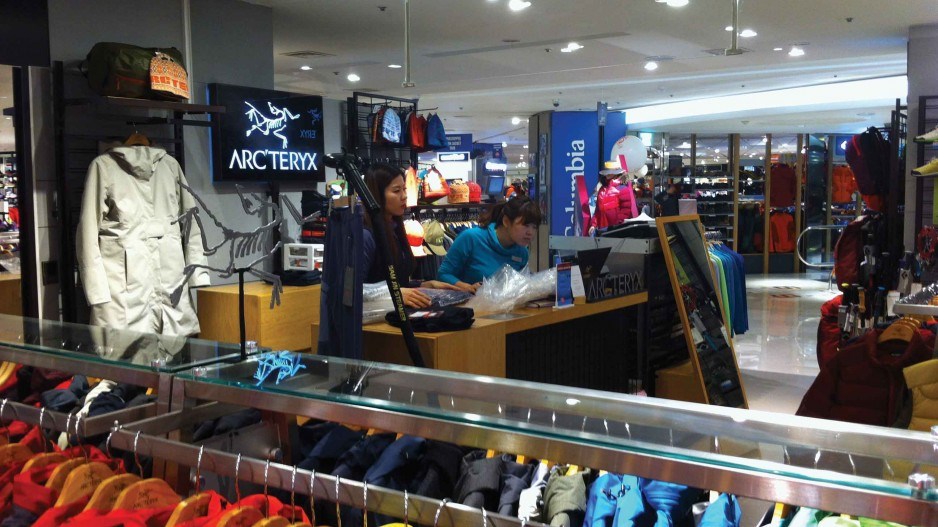Whether it is food, beer, wood or clothing, the Canadian brand has cachet in South Korea, which may explain why Canadian craft beer is suddenly a hit in Seoul.
“They look at our product and there’s an impression of Canada as being healthier, and [having] clean air and open space and fresh water,” said Brock Rodgers, co-founder of Mission Springs Brewing Co. and head of Mission Springs Korea.
“Even if you talk about Canadian wheat – it’s a huge thing in Korea to bake with Canadian flour because it’s deemed to be that much healthier.”
Koreans love beer almost as much as they love the vodka-like rice liquor soju, but only recently have craft brewers like Mission Springs been able to crack the Korean market to capitalize on young, upwardly mobile, brand-conscious Koreans with plenty of disposable income.
Mission Springs opened its first Korean pub last year in Itaewon, a favourite haunt for expatriates living and working in Seoul, followed by another pub in Cheongdam, which is part of Seoul’s trendy, upscale Gangnam district.
Rodgers recently flew to Seoul to finalize deals to open a third pub in Seoul in December and a fourth in the southern port city of Busan in 2015.
Rodgers, who has a Korean investor’s visa, finds it easy to do business in South Korea.
“They understand it – they want to do business,” he said. “I don’t think I’ve been anywhere in the world that wants to do business like Korea does.”
The biggest hurdle to doing business in South Korea may be the first one: building a business relationship.
“In Korea, the first thing, you have to know somebody,” said James Kim, Asia vice-president for the investment firm Vitamine C.
A good way to start making introductions in Korea is through KOTRA, the Korea Trade-Investment Promotion Agency, which has an office in Vancouver and which each year invites foreign investors to attend Foreign Investment Week in Seoul.
Despite being a leader in high-tech manufacturing, Korean companies are open to doing business with foreign manufacturers, especially if there is a niche that a Korean company can’t fill.
Dynamic Attractions, for example, a B.C.-based subsidiary of Empire Industries Ltd. (TSX-V:EIL) that specializes in precision steel engineering and manufacturing, recently landed an $8 million contract to build a new high-tech amusement ride called the Flying Theatre for Lotte Co.’s famous Lotte World adventure theme park, which is attached to the Lotte World mall and hotel in Seoul.
The Flying Theatre combines movable theatre seats and an Imax movie screen to create a thrill ride that gives people a realistic sensation of flying. The design and fabrication will be done in Port Coquitlam by Empire Industries subsidiary Dynamic Structures.
Empire Industries CEO Guy Nelson said he expects to do more business in South Korea.
“They already have a large middle class and they’re just upgrading existing facilities over there,” he said. “We’ve hired a local sales consultant to have a continuous presence over there for us because we see other opportunities there.”
South Korea is Canada’s fourth-largest trading partner, but it’s a lopsided relationship. Canada’s trade deficit with South Korea is $4 billion.
Canadian business and political leaders hope to bring more balance through the Canada-Korea Free Trade Agreement, which goes into effect next year and is expected to boost Canadian exports by 30%.
Canada’s three main exports to Korea – metallurgical coal, copper and wood products – come largely from B.C.
B.C. International Trade Minister Teresa Wat, who returned last week from a trip to Korea, China and Japan, met with Korean officials in the hope of adding liquefied natural gas (LNG) to that list of exports.
Korea, which is the world’s second-largest LNG importer, already has agreements with other LNG exporting nations, but Wat said Korean importers are keen to diversify their sources of LNG.
“They also see a lot of benefits in importing natural gas from us because we have a stable political climate,” Wat said.
But Michael Laffin, chairman for Asia-Pacific for Blake, Cassels & Graydon LLP, said it is telling that Korean companies are not invested in the Canadian LNG scene in a significant way.
Korea has many trading partners, and Canada needs to do a better job of selling Korea on the quality of Canadian goods, whether it is LNG or Canadian beef, Laffin said.
“Getting a seat at the table, that’s not a guaranteed thing – you have to work at it,” he said. “The reality is they have many choices. For us to move forward, we have to do a better job of letting them know who we are and why our product is superior. We are not as efficient and effective in that as we could be because all of the focus is on China.”
Invited along on Wat’s recent Asian tour were 10 B.C. seafood companies, which explored opportunities in both China and Korea and met directly with buyers.
Although he signed no deals, Brian Yip, general manager for Fanny Bay Oysters on Vancouver Island, said there could be a good market for B.C. seafood in South Korea.
“If we find the right distributors, there’s definitely potential to export into the market,” Yip said. “Everybody that we talked to, they’re not talking about a 20-foot container, they’re talking about a 40-foot container at a time. That gives you an indication that they are big buyers.”




